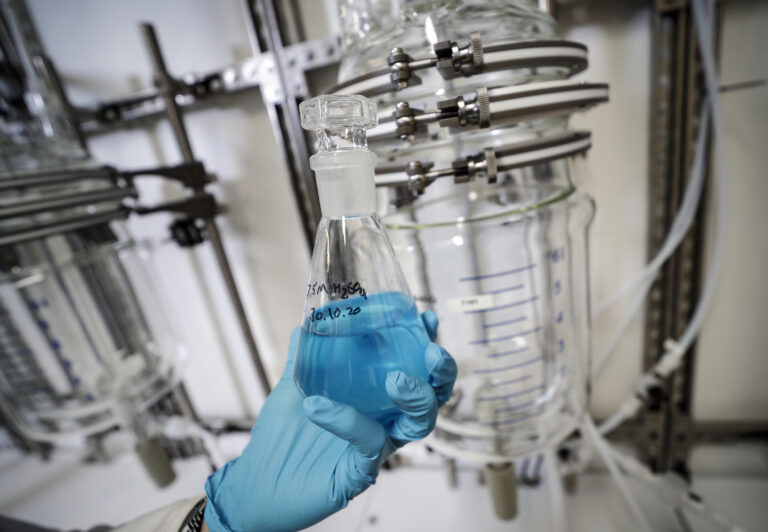|
The story of Zero Mine – how it all started
The story of Zero Mine begins in the Finnish forests and swamps. In 2010, Jyväskylän Energia Oy (now Alva-yhtiöt Oy) began working with Ari Väisänen’s research group at the University of Jyväskylä to study the elemental contents of ash produced by the combustion of wood and peat. Studies found a large amount of rare earth and precious metals, which led to the hypothesis that wood and peat bind minerals from their growing areas, which end up in ash after combustion.

Following promising observations, cooperation was continued. The aim was to develop a way to isolate the elements of interest from the ash and recover them in a controlled manner. The method developed by the university was based on precisely defined acid solutions, which were used to recover the desired substances. Patent protection for the method was applied for and obtained in Finland and also internationally, including in Europe, the USA and China. In addition to the method and patents, research and development cooperation also produced numerous theses.
Based on the optimisation of the recovery method found in 2014, the first plant-level preliminary planning was carried out, in which the size and profitability of the investment required for the treatment of the amount of ash generated at Alva’s plants were investigated. Due to the properties of the ash, the plant’s profitability turned out to be weak and the study was about to be discontinued. In 2015, however, representatives of the Technology Industries of Finland proposed applying the method to the treatment of waste electrical and electronic equipment (WEEE) and the recovery of the critical raw materials contained therein, particularly with regard to rare earth metals.
New direction: WEEE and circuit boards
The meeting with the Technology Industries of Finland changed the direction of the research and development: the ashes were put aside and the focus was on circuit boards dismantled from the WEEE, which are considered to be the most valuable part of the scrap.
In 2017, Alva-yhtiöt Oy, Tapojärvi Oy and Elker Oy established a consortium that started the preliminary planning project in cooperation with the research group of Professor Väisänen at the University of Jyväskylä and Elomatic Oy. Now, the aim was to change and optimise the process designed for ash to be suitable for the processing of circuit boards, taking patent protection into account. The process was found to be both technically and financially feasible and the consortium decided to move on to the next phase.
In 2020–2022, the development and optimisation of the process continued with the same partners with the “bench-scale” test equipment invested in the University of Jyväskylä. The experiments provided valuable insights into process control, challenges and the expected outcome. The most important lesson was that the process is feasible and there is no fundamental misconception. More detailed technical plans were drawn up for the process, and financial analyses found it to be highly profitable.
What happens next?
Although some process-related issues remained unverified in the 2020–2022 project, the consortium decided to start the implementation planning and licensing of the pre-commercial recovery plant in 2024. The aim is to build a plant that processes three tonnes of printed circuit boards per day and recovers valuable and critical raw materials. Jyväskylä was selected as the location of the plant due to the city’s strong contribution and closeness to its partners. The investment decision is estimated to be made between 2026 and 2027 when the licensing is completed.
Subscribe to our newsletter and get the latest information
As a subscriber to Zero Mine’s newsletter, you will be the first to hear the latest news.
"*" indicates required fields
Zero Mine
Zero Mine is a Finnish pioneer in the circular economy that extracts metals without mining. With our patented technology, we separate critical metals from electronic waste and return them to industry clean and of a high-grade – again and again.